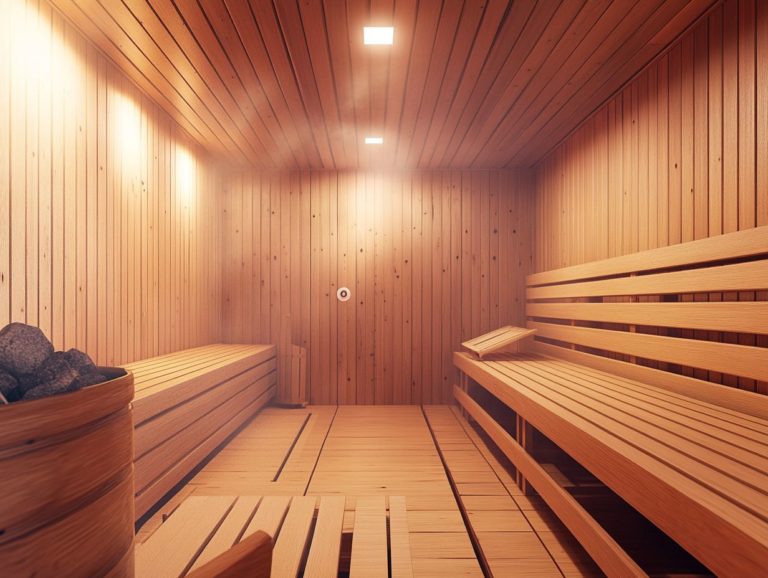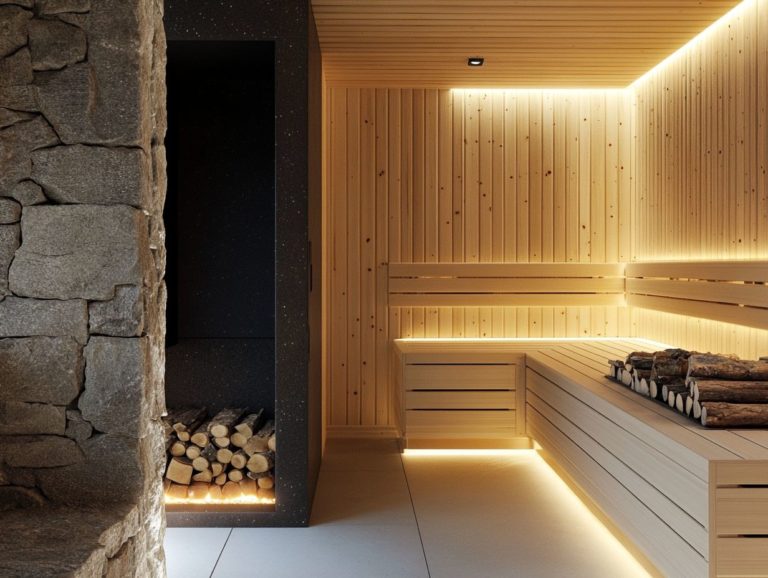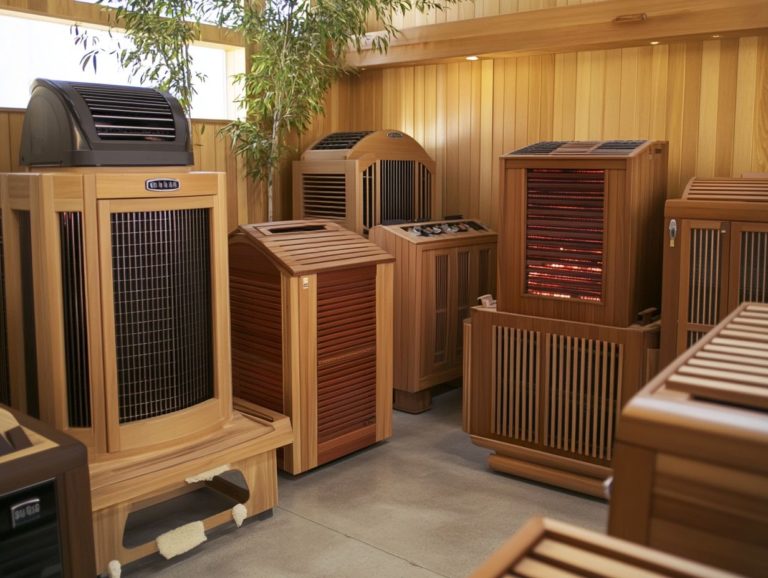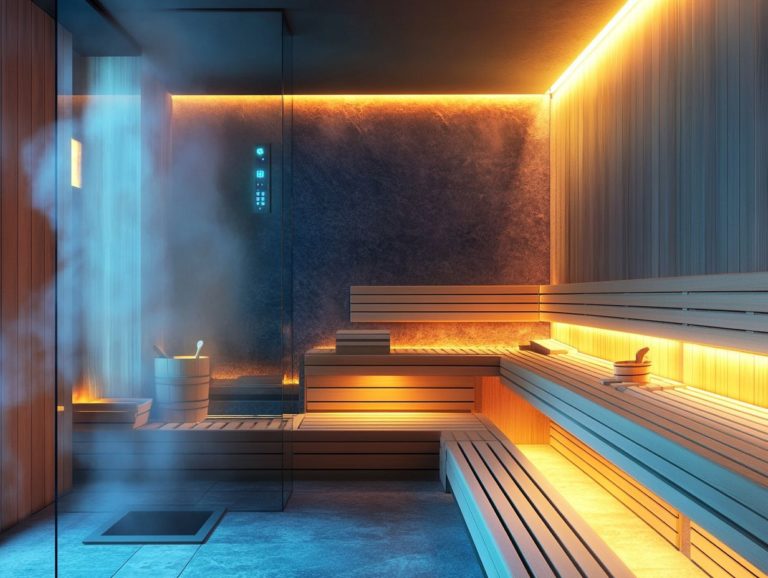The History Behind Traditional Saunas
Explore the fascinating history of traditional saunas now! Saunas, particularly the Finnish sauna, have been treasured for their warmth, relaxation, and health benefits, deeply woven into the fabric of various cultures throughout history.
This exploration invites you to delve into the fascinating history of traditional saunas, including smoke sauna traditions. You ll uncover their early uses and cultural significance, as well as their evolution in materials and design. Discover the rituals and practices that enhance the sauna experience, such as sauna customs. Examine modern adaptations and appreciate the physical and mental health benefits they bestow.
You’ll also find valuable tips for safely incorporating this ancient sauna tradition into your routine. Join us on an exciting journey through the rich tapestry of sauna history, including sauna culture, and its enduring relevance today!
Contents
- Key Takeaways:
- The Origins of Traditional Saunas
- Evolution of Sauna Construction
- Traditional Sauna Rituals and Practices
- Modern Adaptations of Traditional Saunas
- Benefits of Traditional Saunas
- How to Incorporate Traditional Saunas into Your Routine
- Common Questions about Traditional Saunas
- What is the history behind traditional saunas?
- How were traditional saunas used in ancient times?
- When did traditional saunas become popular in Europe and North America?
- What materials were traditionally used to build saunas?
- How Have Traditional Saunas Evolved Over Time?
- Why Are Traditional Saunas Still Popular Today?
Key Takeaways:
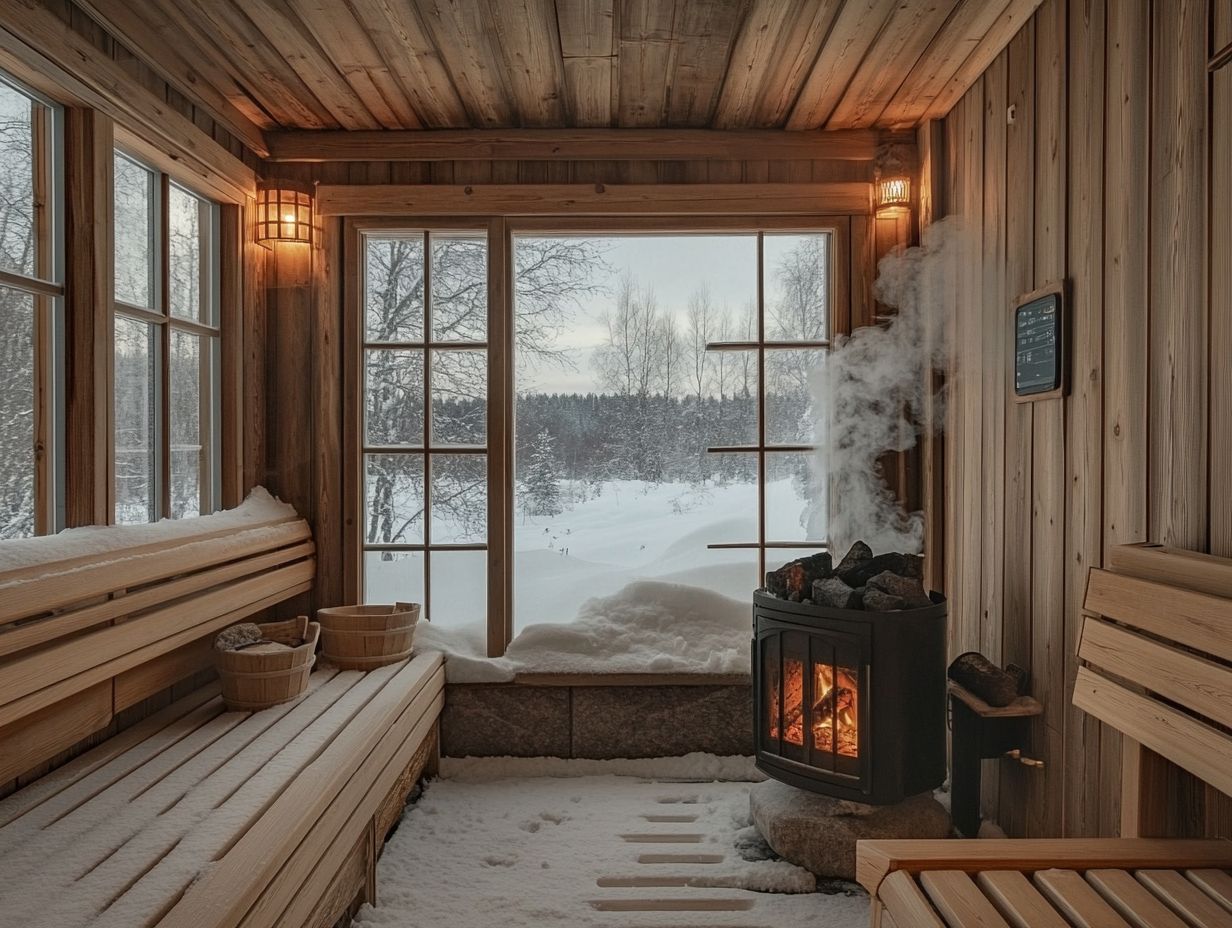
- Traditional saunas, such as the sauna culture found in Finland, have been used for centuries across various cultures for healing and spiritual purposes.
- Saunas have evolved in construction materials and design, but the traditional rituals and practices remain intact.
- In addition to providing physical and mental health benefits, traditional saunas can be incorporated into daily routines with proper safety measures and enjoyment in mind, especially when considering sauna etiquette.
The Origins of Traditional Saunas
The origins of traditional saunas trace back to ancient practices across various cultures, particularly in Finland. Sauna bathing has blossomed into a cherished cultural tradition within sauna history.
Celebrated for its health benefits and communal experience, this wooden sauna sanctuary transcends mere heat therapy (the use of heat for therapeutic purposes). It holds a vital place in Finnish culture, spirituality, and social gatherings, highlighting the profound significance of sauna rituals throughout history, including ancient sauna traditions.
You ll find that engaging in this time-honored sauna practice connects you not only to the past but also to the warmth of shared experiences within the sauna community.
Early Uses and Cultural Significance
Early uses of saunas were intricately woven into Finnish culture, where sauna customs and rituals became vital to community life. They fostered not only health benefits but also social cohesion, especially evident in communal sauna sessions.
Imagine this communal sauna space as a sanctuary for relaxation and conversation, a place where you can unwind and share stories with others. Various cultures have embraced similar sauna practices, crafting unique environments centered around health and social interaction.
Take the jjimjilbangs of Korea, for instance. Here, sauna experiences are enhanced with relaxation areas and hot and cold baths, creating a lively atmosphere where friends and families gather to enjoy food and leisure activities together.
In Turkey, the hammam offers a communal bathing ritual that emphasizes health and hygiene. It turns the sauna experience into a social event where you can connect, cleanse, and rejuvenate alongside others. These examples highlight how saunas serve as the heartbeats of community life, enriching both physical well-being and social bonds through the sauna traditions they embody.
Evolution of Sauna Construction
The evolution of sauna construction has undergone remarkable advancements over the centuries, influenced heavily by sauna technologies. You ll observe how it has transitioned from simple wooden sauna structures to contemporary sauna designs that seamlessly blend innovative sauna technologies.
These advancements not only enhance functionality but also elevate the overall aesthetics, creating a truly immersive sauna experience.
Materials and Design Changes
Sauna materials and designs have adapted remarkably. They blend traditional practices with contemporary needs.
You ll notice the enduring appeal of wood in traditional saunas. Modern sauna architecture embraces a diverse array of materials, including glass and stone.
Historically, wood has been the go-to choice for its exceptional thermal properties. It creates a warm and inviting atmosphere that feels just right in a sauna.
Today s designs, however, include innovations like stone, glass, and composite materials. This results in a unique fusion of functionality and style.
These advancements have transformed the sauna experience. Many options are now available for both dry and wet heat sauna sessions.
This evolution highlights how architectural trends shape sauna usage. It appeals to a broader audience eager for relaxation, wellness, and social engagement.
People now seek a space that beautifully marries modern sauna styles with deep-rooted tradition.
Traditional Sauna Rituals and Practices
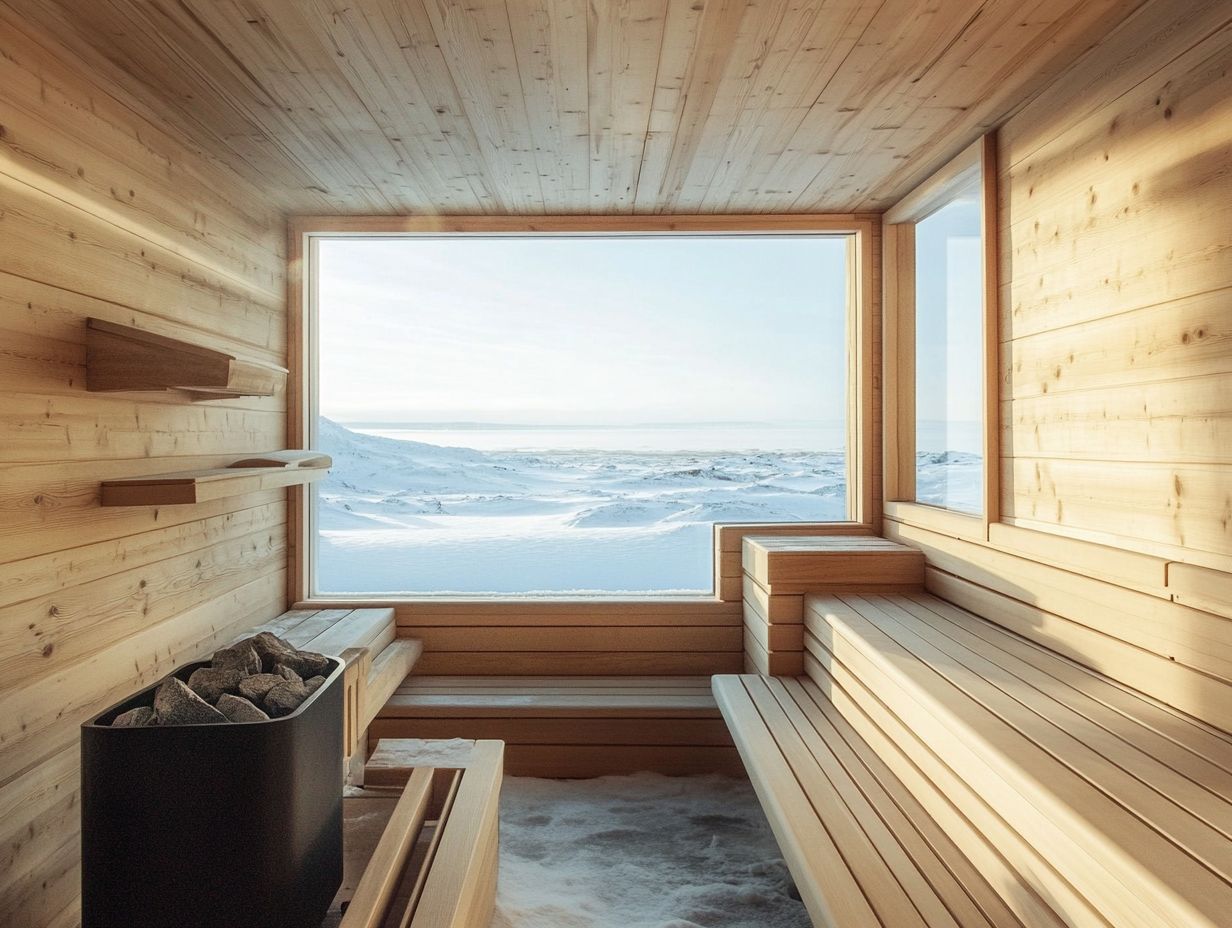
Traditional sauna rituals and practices offer a rich tapestry of customs. They are designed to elevate your sauna experience and enhance health benefits.
From the warmth of communal sauna bathing to intricate etiquette, these traditions intertwine ancient sauna origins with modern interpretations.
Each sauna practice deepens your connection to this timeless sanctuary. Every visit becomes a journey through sauna history and culture.
Healing and Spiritual Purposes
Sauna therapy is esteemed for its healing and spiritual dimensions. It offers numerous health benefits, from improved circulation to enhanced mental clarity.
This age-old practice encourages detoxification. Your body releases toxins through the power of sweating.
It also bolsters your recovery processes after physical exertion. Scientific studies show that regular sauna use can reduce blood pressure and improve cardiovascular function.
It s not just about physical gains; sauna spirituality and community play a crucial role. Many cultures, from the Finns to Native Americans, regard sauna bathing as a sacred ritual.
This practice fosters mindfulness and relaxation through various traditions. Communities often weave in sauna rituals, storytelling, and shared experiences.
They connect the therapeutic effects of heat therapy to a profound sense of community and well-being.
Modern Adaptations of Traditional Saunas
Modern adaptations of traditional saunas introduce remarkable innovations. This includes the rise of infrared and electric saunas.
These options align with contemporary preferences. They also preserve the essence of the traditional sauna experience.
Innovations and Variations
Innovations and variations in sauna designs offer a world of options. You can explore steam saunas and advanced ventilation systems.
These advancements make your sauna sessions more enjoyable and accessible. Seek relaxation and wellness through modern saunas.
The rise of smart saunas has transformed your experience. You can control temperature settings, lighting, and humidity directly from your smartphone.
These cutting-edge technologies cater to your preferences. They offer personalized settings to fit your fast-paced lifestyle.
With various options available from traditional Finnish saunas to infrared and bio saunas you can find the perfect match for your needs.
This adaptability elevates your sauna experience. It encourages a consistent wellness routine that addresses both your physical and mental health.
Ready to discover your perfect sauna experience? Let s find out together!
Benefits of Traditional Saunas
Traditional saunas offer numerous benefits. They enhance health, mental well-being, and relaxation. This makes the sauna experience a vital wellness trend cherished by many cultures worldwide, recognizing the importance of sauna purification.
Indulging in a sauna session rejuvenates your body and nurtures your mind, making it an integral part of an overall well-being journey.
Physical and Mental Health Benefits
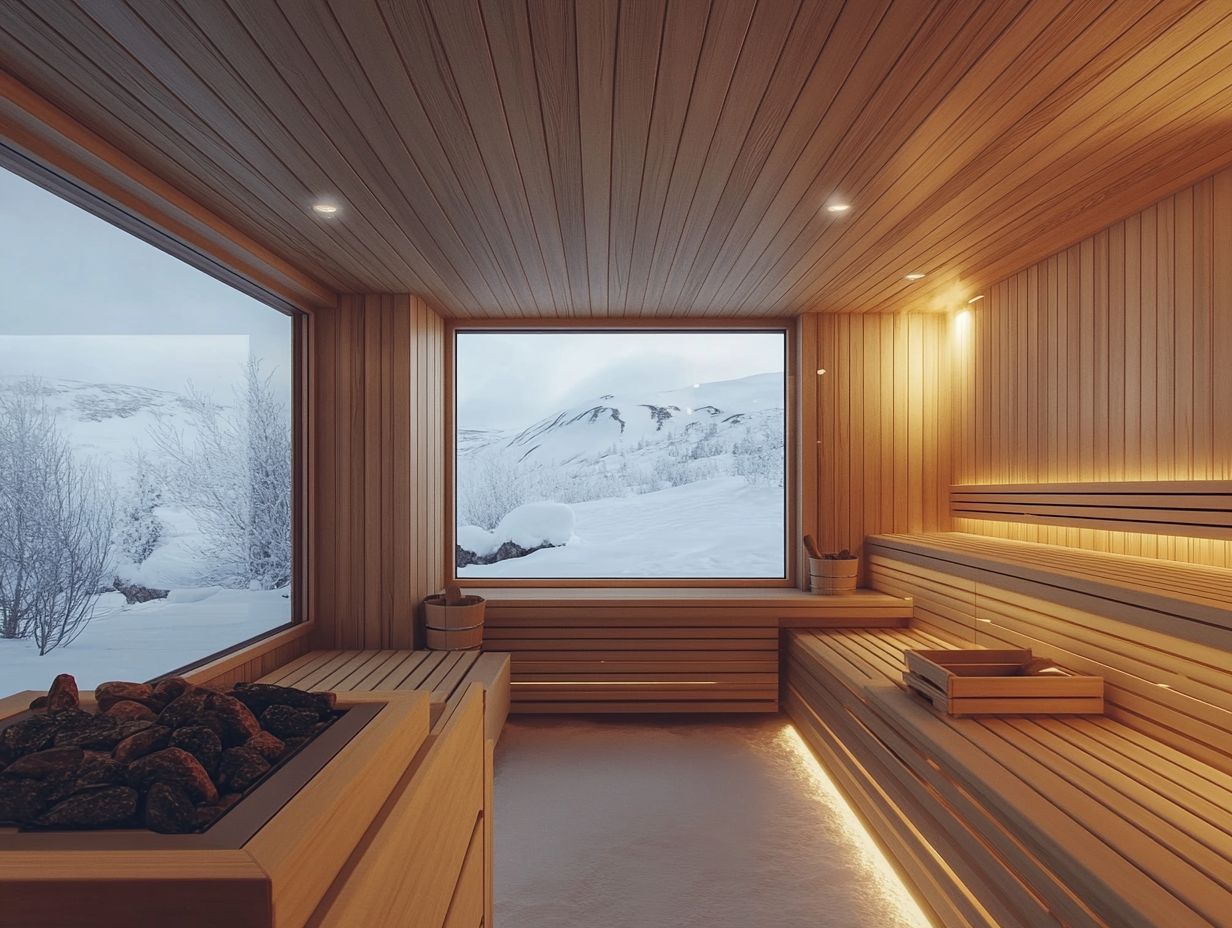
The physical and mental health benefits of sauna therapy are nothing short of remarkable. Regular sauna use enhances cardiovascular health and significantly reduces stress and anxiety, positioning saunas as critical wellness tools.
Numerous studies show that consistent sauna sessions positively impact heart health, leading to lower blood pressure and a decreased risk of heart disease. These sessions can sharpen your mental clarity and foster relaxation, making it easier to tackle everyday stressors.
Whether you prefer a public sauna experience or the comfort of your own private retreat, these benefits are accessible to anyone looking to enhance their overall well-being through sauna practices. Experience a lift in your mood, improved sleep quality, and a rejuvenated sense of physical vitality through the benefits of sauna bathing.
How to Incorporate Traditional Saunas into Your Routine
Incorporating traditional saunas into your routine can significantly elevate both your physical and mental well-being. Engage in thoughtfully structured sauna sessions and adhere to proper sauna etiquette to unlock a myriad of health benefits promoting a balanced lifestyle centered around the sauna experience.
Tips for Safe and Enjoyable Use
To ensure a safe and enjoyable sauna experience, follow certain practices. Stay properly hydrated and take a refreshing cold plunge after your sessions to enhance recovery.
Limit your sauna sessions to about 15-20 minutes, especially if you re a beginner or have any pre-existing health conditions. Being aware of your own health is crucial; consult with a healthcare provider if you have cardiovascular issues or respiratory concerns.
Your enjoyment can significantly increase by incorporating cultural customs, like practicing mindfulness or savoring a refreshing drink after your session. Embrace these elements to fully unlock the benefits of sauna bathing while prioritizing your safety and well-being.
Common Questions about Traditional Saunas
What is the history behind traditional saunas?
The history of traditional saunas dates back to ancient civilizations, with evidence of sauna use in areas such as Finland, Russia, and North America for thousands of years.
How were traditional saunas used in ancient times?
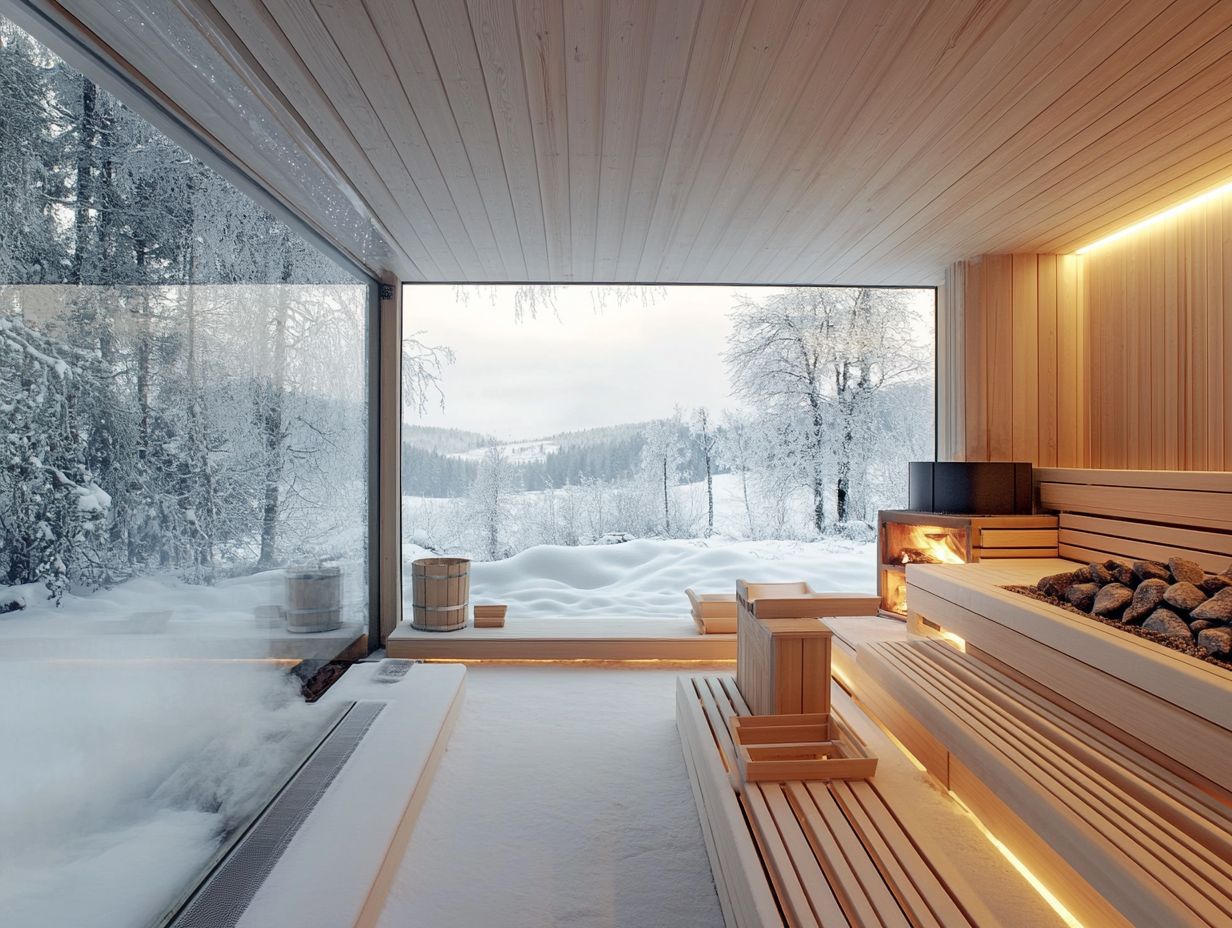
Ancient saunas were primarily used for therapeutic purposes. They were believed to have healing properties for both physical and mental ailments and were also venues for spiritual and social gatherings.
When did traditional saunas become popular in Europe and North America?
Traditional saunas gained popularity in Europe and North America in the mid-20th century, coinciding with the rise of modern spa culture. This led to the development of new sauna designs and innovations.
What materials were traditionally used to build saunas?
In Finland, traditional saunas were built using logs and heated with wood-burning stoves. In other parts of the world, saunas were constructed using stones, mud, and other natural materials.
Start your sauna journey today for better health!
How Have Traditional Saunas Evolved Over Time?
Traditional saunas have changed in design.
New materials like ceramic, metal, and glass have been introduced.
Heating technology has also improved.
Electric heaters and infrared heating, which uses light, are now common.
Why Are Traditional Saunas Still Popular Today?
People love traditional saunas for their authenticity and health benefits.
They provide a unique way to relax and detoxify.

